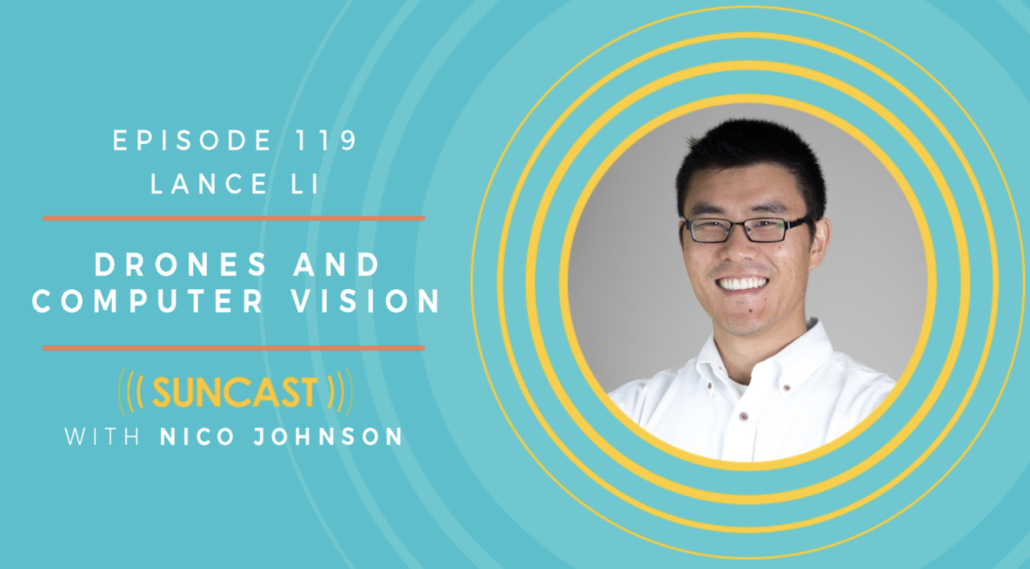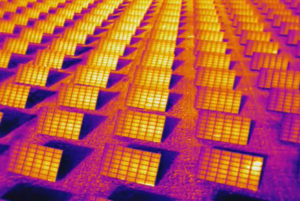Aerospec’s founder and CEO, Lance Li, recently joined Nico Johnson on his SunCast podcast, which features the latest developments in the solar energy industry.

In this post, we will highlight topics covered in Lance’s SunCast episode, particularly the role that drone, computer vision and data analytics has in solar PV inspections and anomaly detection.
However, be sure to check out the full episode at SunCast website or on iTunes.

1. The Aerospec story: Why did we choose solar?
Drones and data analysis have applications in almost every industry where process automation is needed. However, Aerospec’s focus on solar is deeply rooted in its environmentally-conscious mission to promote the adoption of clean energies.
“We were seeing super-fast growth in the last decade in solar integration into our main grid system. That’s where I see that renewable energy can be and is going to be the future of our energy needs. ”
2. The problem with solar O&M: What’s wrong now and how to address the issue?
Solar is a long-term investment and full-site inspections are a critical step in preventative maintenance, ensuring an acceptable ROI for asset owners, O&M providers, and financiers. However, a lack of process automation has made regular full-site inspections prohibitively expensive.
In response, Aerospec combines state-of-the-art drone technology with artificial intelligence and computer vision to streamline and optimize site inspections.
“A 100 MW site will take two technicians almost 30 days to go through the checks while our drones and analytics system can complete the entire site inspection in 3 days. That’s where efficiency and value-driven proposition comes from.”
3. The demystification of new technology: What is “computer vision” and why is it important?
Currently, post-inspection data analysis consists of training an individual to go through gigabytes worth of images, picking out anomalies one by one – an incredibly inefficient and tedious process.
“What computer vision does is train the computer program to learn how we identify these anomalies, such as hotspots, diode failures or string failures. We gave computers a training model, so they learn to know what each of those anomalies looks like. ”
4. The application of Aerospec’s solution: Can it be integrated with other asset management platforms, like PowerHub and 3megawatt?
“We collect very specific aerial visual data, which has tremendous information on its own and can be integrated with other metadata managed by software, like Powerhub. That will give us a comprehensive picture, in terms of the condition of performance, that if something goes wrong, where exactly it is. And almost down to the cell level, we can see what’s going on and track the performance.”
5. The value propositions of Aerospec: What makes Aerospec different?
In solar O&M, one of the high-cost activities is “truck rolls”, which refers to the time and cost associated with sending technicians to the field for inspections and repairs. Through continuous conversations with industry experts, Aerospec has discovered the industry’s real pain point regarding O&M – how to optimize truck rolls in onsite maintenance.
And this is how Aerospec’s drone-enabled AI solution can minimize truck rolls, improve O&M economics and further impact the industry:
Speed of Delivery:
“For a 5 MW site, with our technology, we can give a report on module-level anomalies within one hour, after the data’s been collected by the drone.”
Reduced Costs:
“On average, utility-scale solar sites have an O&M cost of 20 dollars/kwh. It means that even if we are able to improve cost savings by one dollar, there will be tens of millions of dollar savings for companies, including asset owners and financiers.”
And the benefit is not only for solar asset owners and financiers but extends to all players along the value chain, including insurance companies.
“Insurance companies want to know whether a solar project can perform at the level that it was calculated so they have to put a premium monitor.”
If you’re interested in learning more about Aerospec, email us at info@aerospec.us and we’ll be in touch. Feel free to share this episode with your friends. Leave a comment below and let us know about your solar inspection process or if you’ve been using drones and computer vision in a similar capacity.




